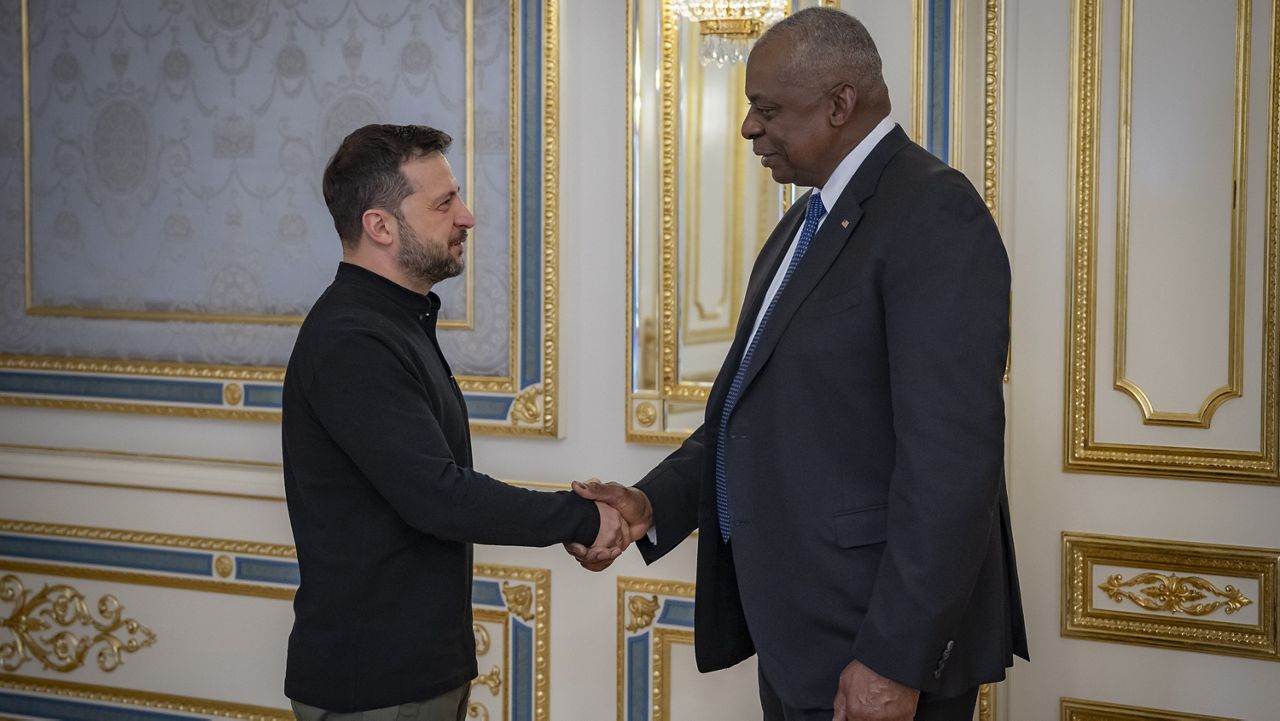The United States announced Wednesday that the Group of Seven nations has agreed to loan Ukraine $50 billion that will be repaid with interest from frozen Russian assets.
What You Need To Know
- The United States announced Wednesday that the Group of Seven nations has agreed to loan Ukraine $50 billion that will be repaid with interest from frozen Russian assets
- The U.S. will provide $20 billion, while the European Union, Britain, Canada and Japan will contribute the rest
- The Biden administration hopes to provide $10 billion to Ukraine for economic support
- The remaining $10 billion would go toward military support, but Congress would first need to raise the amount of military financing the U.S. can provide to Ukraine
The U.S. will provide $20 billion, while the European Union, Britain, Canada and Japan will contribute the rest.
“To be clear, nothing like this has ever been done before,” Daleep Singh, White House deputy national security adviser, told reporters Wednesday morning. “Never before has a multilateral coalition frozen the assets of an aggressor country and then harnessed the value of those assets to fund the defense of the aggrieved party.”
Immediately following Russia’s invasion of Ukraine in 2022, the U.S. and its allies froze roughly $300 billion of Russian central bank reserves in western financial institutions.
There had been some discussion about confiscating those assets and giving them directly to Ukraine, but European officials expressed concerns over the legality of such a move. Instead, the G-7 nations agreed to use the interest the assets are earning to pay back the loan.
“The revenues that we are using to repay these loans, under European law, these revenues don't belong to Russia,” Singh said.
The Biden administration hopes to provide $10 billion to Ukraine for economic support, which could include paying for repairs to Ukraine’s energy grid and initiatives aimed at helping Ukraine’s “eventual economic recovery,” Singh said.
The remaining $10 billion would go toward military support, but Congress would first need to raise the amount of military financing the U.S. can provide to Ukraine.
Singh said the Biden administration expects to disperse at least half of the $20 billion before the end of the year and is hoping Congress acts by mid-December.
If lawmakers do not approve the changes, the U.S. would still loan Kyiv $20 billion, but it would be entirely for economic support, Singh said.
The deputy national security adviser said the loan will not only provide Ukraine with urgent assistance, but it will send “an unmistakable signal.”
“The United States and its G-7 partners will not fatigue,” he said. “We will continue to use our creativity and collaboration to support Ukraine's fight for independence and sovereignty. And tyrants are responsible for the damages they cause, not U.S. taxpayers.”
Collecting full repayment of the loan will require the sanctions on Moscow continuing for some time. Singh noted that the heads of the 27 EU countries recently reaffirmed in a joint statement that they believe the assets should remain frozen until the war has ended with a “free and sovereign” Ukraine and Russia has paid for damages.
The EU also has committed to loaning $20 billion, giving it as much incentive as the U.S. to recoup its investment, Singh added.
President Joe Biden hailed the move in a statement, saying they "will support the people of Ukraine as they defend and rebuild their country" and "make it clear" that "tyrants will be responsible for the damages they cause."
"Make no mistake: Russia will not prevail in this conflict," Biden said. "The people of Ukraine will prevail. This is another reminder to Vladimir Putin that the world has rallied behind Ukraine—and the United States and our G7 partners will continue to stand with them every step of the way."



